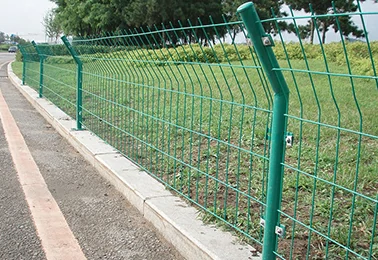 TEL:
+86-13102802206
TEL:
+86-13102802206
 Email:
fencenetting@china.com
Email:
fencenetting@china.com
 Language
Language
 TEL:
+86-13102802206
TEL:
+86-13102802206
 Email:
fencenetting@china.com
Email:
fencenetting@china.com
 Language
Language


The Significance of Barbed Wire Fences in Modern Society
Barbed wire fences, a necessity and a symbol of division, have long played a crucial role in various aspects of society, from agriculture to national security. Introduced in the late 19th century, barbed wire has transformed the way we manage land, protect property, and even control borders. This article explores the multifaceted roles that barbed wire fences play today, highlighting their importance in agriculture, security, and environmental management.
Historical Context
The inception of barbed wire can be traced back to the need for efficient livestock management. Prior to its invention, ranchers faced challenges in keeping animals contained within designated areas. The introduction of barbed wire offered a cost-effective solution, allowing for the rapid enclosure of large expanses of land. It was particularly instrumental in shaping the American West, where vast, open ranges required effective boundary marking and grazing management. As settlers moved westward, barbed wire became synonymous with the establishment of properties and the development of agricultural practices.
Agricultural Impact
Today, barbed wire continues to be essential in modern farming. It provides a durable means of fencing to keep livestock secure, protecting both the animals and the crops they graze on. Farmers utilize barbed wire to delineate owned land, manage herd movement, and prevent trespassing. The effectiveness of barbed wire in containing livestock minimizes potential conflicts with neighboring properties, thus facilitating harmonious land use practices. Moreover, it plays a role in preserving biodiversity by preventing overgrazing in certain areas, allowing pastures to regenerate and support diverse plant and animal life.
Security and Safety

Beyond agriculture, barbed wire fences serve as a critical tool for ensuring security. In both urban and rural settings, they protect properties from unauthorized access. Industrial sites, military installations, and correctional facilities often utilize barbed wire to create barriers that deter intruders. The intimidating presence of barbed wire sends a clear message about boundary enforcement and the need for safety. Additionally, in regions plagued by conflict or high crime rates, barbed wire plays a role in bolstering security measures, acting as a physical manifestation of protection and vigilance.
Border Restrictions and Immigration
One of the most controversial applications of barbed wire fences is its use in controlling borders. Many countries have erected barbed wire barriers to manage immigration and prevent illegal crossings. While proponents argue that such measures are necessary for national security and the regulation of immigration, critics contend that they symbolize exclusion and exacerbate humanitarian crises. The sight of barbed wire fences separating communities and families highlights the complex dynamics surrounding migration, safety, and human rights. As global discussions around immigration evolve, the role of barbed wire in border control continues to provoke debate and challenges.
Environmental Management
Interestingly, barbed wire fences can also contribute to environmental management. By marking boundaries for conservation areas, they help protect sensitive ecosystems from the encroachment of livestock and human activity. This allows for the preservation of native flora and fauna and supports conservation efforts aimed at maintaining biodiversity. Thoughtfully placed barbed wire can assist in guiding wildlife movement while reducing human-wildlife conflict, ultimately contributing to more sustainable land-use practices.
Conclusion
In conclusion, barbed wire fences are much more than mere barriers; they are integral components of agricultural efficiency, security measures, and even environmental conservation. While their presence can evoke feelings of division and exclusion, they also highlight the complexities of managing land, property, and borders in an ever-evolving society. The future of barbed wire may see innovations in design and materials, but its significance as a tool for defining boundaries and protecting resources will remain. As we move forward, the challenge lies in balancing the need for security and property protection with the values of inclusivity and sustainable coexistence.